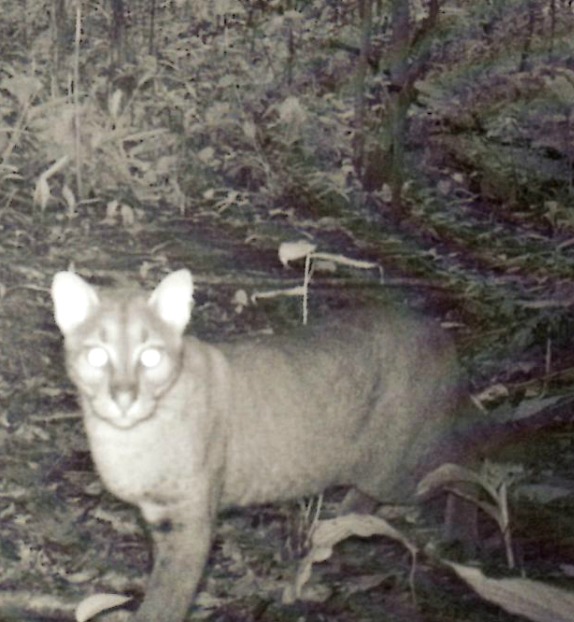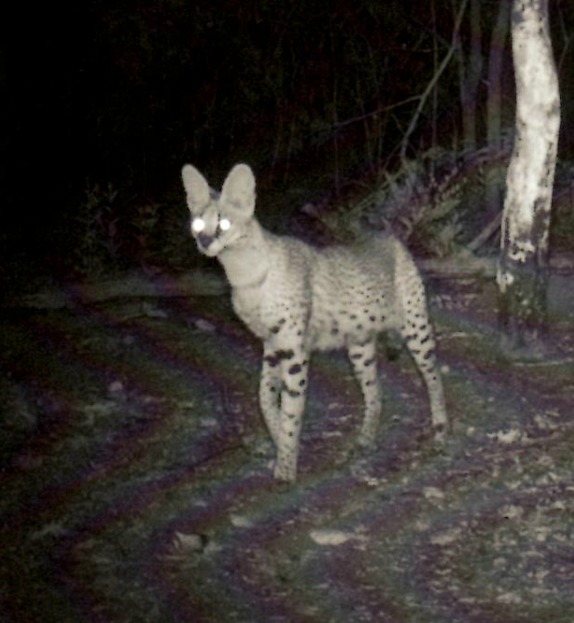By Raffael Hickisch and Thierry Aebischer
We report here that all three species of the caracal lineage were recorded in the same areas of the Chinko/Mbari drainage basin of eastern Central African Republic. Using camera traps we recorded African golden cat three times at one site, 190 km north of its recognized range. The caracal was recorded once, 250 km south of its recognized range and 7 km from where the golden cat was recorded. Finally, the serval was recorded on 12 events, 4 km from where the golden cat was recorded. The indication of this sympatric presence of all three species of the caracal lineage has not been reported for many (if any) areas in Africa and is worthy of further investigation.
These findings are remarkable. The occurrence of golden cat in the highly fragmented savannah/rainforest patch at that latitude was unexpected. Given that the golden cat is known as a forest and deep forest dweller, one would expect to see it 200 km away in the contiguious lowland forest. The fact that we detected serval 4 km away and caracal 7 km away from the site of the golden cat captures show that all three species occur within close range of each other.

According to known species ranges, there are very few areas that actually indicate a possibly sympatric presence of all three species, and we believe this to be the first documentation of such an occurrence.
Surprisingly, our camera traps did not record a single African wild cat Felis silvestris, nor did we see tracks on this species on the line transects. Additionally, safari hunting staff operating in this area since 2007 have failed to record this small cat in the area. According to published distribution maps, we would expect to find this fourth member of the African small cats in the Chinko/Mbari drainage basin.

Because of this curious finding, we plan to publish a comprehensive analysis of all predator events the camera traps recorded in 2012 and more findings on occurrence, abundance and habitat preference of species from the caracal lineage as soon as possible. We will continue to generate and share relevant data in the coming years of research and conservation work in the Chinko/Mbari drainage basin.

Pressure on this important area is expected to increase with poaching, land use changes, and political unknowns, underlining the need to understand this unique habitat and its functioning to prepare for future precautions.
Source: IUCN Cat News 58, Spring 2013